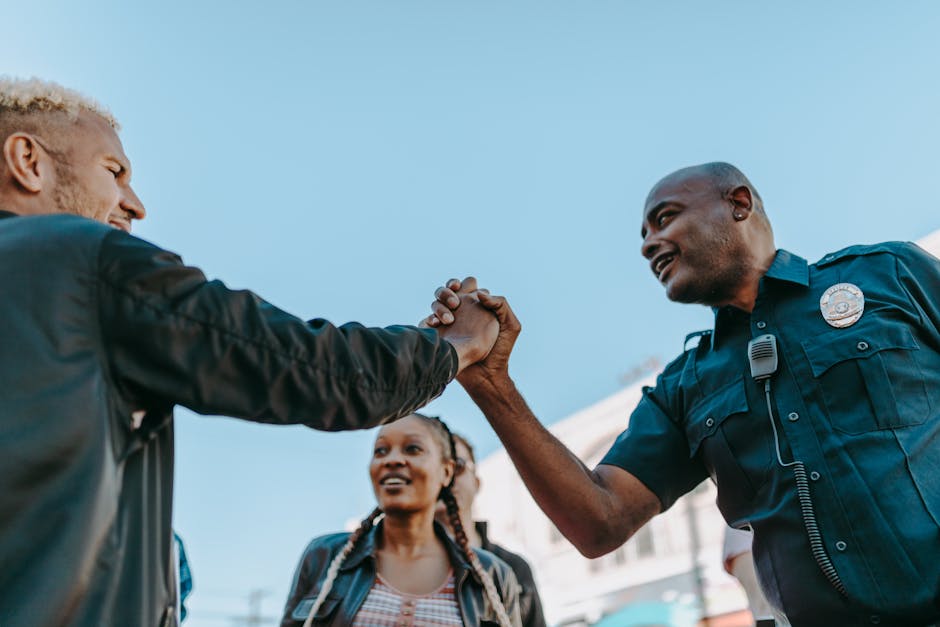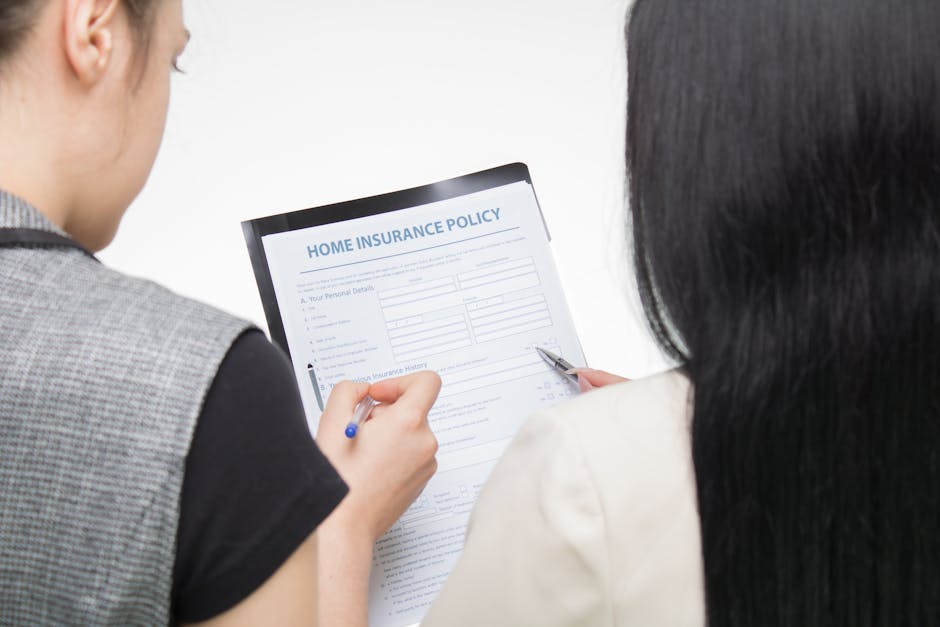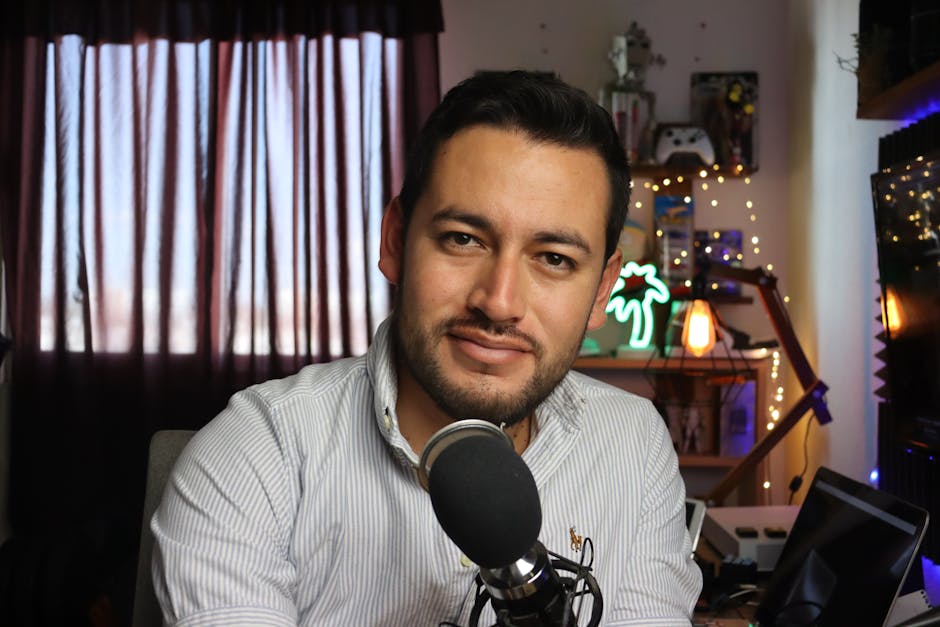How I Landed My First Podcast Sponsor (my Outreach Strategy).
For years, my podcast was a labor of love. Every episode was poured over, edited with precision, and published with a hopeful heart. It was a passion project, a creative outlet, and a genuine connection with my listeners. But as the audience grew, so did the production costs, the time commitment, and the quiet whisper in the back of my mind: “Could this actually become sustainable?” The idea of landing a sponsor felt like a distant dream, something reserved for the mega-podcasts with millions of downloads. Yet, the desire for that first big break, that validation of my efforts, was strong. What I didn’t realize then was that the path to my first podcast sponsor wasn’t about luck or a massive following alone; it was about a deliberate, thoughtful, and incredibly targeted outreach strategy.
This isn’t a story about overnight success or a magic bullet. It’s the detailed account of my journey, the specific steps I took, the emails I crafted, and the mindset shifts that ultimately led me to secure my very first brand partnership. If you’re a podcaster staring at your download numbers, wondering how to turn your passion into profit, this is my blueprint for how I did it, focusing entirely on the outreach strategy that made the difference.
The Moment I Decided It Was Time: Beyond Just Passion
Before I even considered drafting an email, there was a critical internal shift. For a long time, I resisted the idea of “monetizing” my show, fearing it would tarnish the authenticity my listeners loved. But as my podcast grew, so did the dedication required. I was investing significant time and resources – from equipment upgrades to editing software, not to mention the hours of research and recording. The tipping point arrived when I realized that seeking sponsorship wasn’t about selling out; it was about sustaining and enhancing the very thing my audience valued. It was about professionalism, allowing me to invest even more into creating higher-quality content.
My show wasn’t topping the charts with millions of downloads, but it had a consistent, engaged listenership that was growing steadily. I had been producing episodes regularly for over a year, demonstrating commitment and reliability. This consistency, coupled with a genuine connection with my audience, became my first mental green light. I understood that brands don’t always chase sheer volume; they chase engagement and alignment. This realization was the catalyst that moved me from merely dreaming about sponsors to actively pursuing them with a structured plan.
I also considered the broader podcasting landscape. Industry reports indicated a significant increase in podcast advertising revenue, with projections showing continued growth. This wasn’t just a niche hobby anymore; it was a legitimate media channel. Understanding this market trend, as highlighted by sources like podcast industry statistics, gave me the confidence that brands were actively looking for avenues to connect with engaged audiences, regardless of the show’s overall scale.
Building My Sponsorship Toolkit: What Brands Really Want to See
Once the decision was made, the next crucial step was preparation. I knew that simply saying “my podcast is good” wouldn’t cut it. Brands are data-driven, and they need compelling reasons to invest. My first task was to gather all the ammunition I’d need to make a persuasive case. This wasn’t just about raw download numbers; it was about understanding the story those numbers told.

Knowing My Audience Inside Out
The most valuable asset I had was my audience. Brands want to know who they’re talking to. I spent considerable time digging into my podcast hosting analytics to glean understanding your audience demographics. This included:
- Demographics: Age ranges, gender breakdown, geographical locations. For example, my analytics showed a strong concentration of listeners aged 25-44, predominantly female, residing in urban areas across the US and Canada. This specificity was invaluable.
- Interests: What else do my listeners engage with? What other podcasts do they listen to? What social media platforms do they frequent? (I gathered this through listener surveys and social media engagement.) I used simple Google Forms surveys shared on my social media and mentioned in episodes, asking about their hobbies, favorite products, and other media consumption. The insights were eye-opening, revealing common interests in sustainable living, personal development, and specific tech gadgets.
- Listener Behavior: Average listening duration, episode completion rates, peak listening times. My data showed an impressive 80% episode completion rate for 45-minute episodes, indicating deep engagement, not just casual listening. This metric is a powerful indicator for brands looking for attentive audiences.
This detailed profile allowed me to paint a vivid picture of my ideal listener – a picture I knew specific brands would find appealing. It wasn’t just “people interested in X”; it was “engaged females aged 25-44, living in major cities, passionate about sustainable tech and personal growth.”
Crafting a Compelling Media Kit
My media kit became my professional calling card. It wasn’t just a collection of stats; it was a narrative of my podcast’s value. I ensured it was visually appealing, easy to digest, and contained all the essential information a potential sponsor would need. Key elements included:
- About the Podcast: A concise summary of my show’s mission, genre, and unique selling proposition. I highlighted what made my show distinct from others in its niche, emphasizing the intimate connection I had with my listeners.
- Audience Demographics: The detailed breakdown I’d just compiled, presented visually with charts and graphs for easy comprehension.
- Key Statistics: Total downloads, average downloads per episode (within a specific timeframe, e.g., first 30 days), listener growth trends. Instead of just raw numbers, I showed growth percentage month-over-month to demonstrate upward trajectory. For instance, “Average 30-day downloads: 5,000, with a 15% month-over-month growth.”
- Engagement Metrics: Testimonials from listeners, social media engagement rates, notable listener interactions. I included screenshots of positive reviews and heartwarming DMs, showing the qualitative impact of my show.
- Sponsorship Opportunities & Rate Card: A clear outline of what I offered (e.g., pre-roll, mid-roll, post-roll, dedicated segments, social media mentions) and initial pricing suggestions. I researched average understanding CPM rates for podcasts of similar size and niche to set a competitive yet fair rate. I started with a range, open to negotiation, offering flexibility for different campaign durations. My standard offering included 60-second mid-roll ads and 15-second pre-rolls, with options for host-read or supplied audio.
- Call to Action & Contact Information: Professional and easy to find, inviting them to discuss a partnership.
This toolkit, especially my meticulously crafted creating a compelling media kit, gave me the confidence to approach brands knowing I had a professional, data-backed presentation ready.
Unearthing the Perfect Brand Allies: My Targeted Prospecting Process
With my media kit polished and my audience data in hand, the real work of outreach began. I resisted the urge to simply Google “podcast sponsors.” Instead, I focused on identifying brands that were a natural, authentic fit for my show and, more importantly, for my audience.
Beyond the Google Search: My Multi-pronged Approach to Prospecting
My prospecting wasn’t random; it was highly strategic. I aimed for synergy, believing that the most successful sponsorships are those where the brand genuinely resonates with the podcast’s content and its listeners’ values.
- Listener-Driven Discovery: I started with my own audience. What products or services did *they* talk about? What problems did my podcast help them solve, and what tools or solutions might complement that? I paid close attention to comments, social media discussions, and even casual conversations. If listeners often asked about my recording setup, audio gear brands became a target. If they discussed productivity, apps or services in that space were noted.
- Personal Consumption & Recommendations: What products or services did *I* genuinely use and love? Authenticity is paramount. If I could personally vouch for a brand, my endorsement would be far more believable. This included everything from my coffee brand to my project management software. I made a list of every product or service I regularly used that aligned with my show’s themes.
- Competitor Analysis (Strategic, Not Copycat): I listened to other podcasts in my niche, particularly those slightly larger than mine but not yet mega-hits. I noted who was sponsoring them. This wasn’t to copy, but to identify brands already familiar with the podcast advertising landscape and potentially looking to expand their reach within similar demographics. I looked for patterns – were there certain types of products (e.g., meal kits, subscription boxes, online learning platforms) that consistently advertised in my genre?
- Brand Alignment with Podcast Themes: My podcast had strong themes around personal growth and mindful living. I brainstormed brands whose mission statements or product lines reflected these values. This included sustainable fashion brands, meditation apps, ethical consumer goods, and educational platforms. The goal was to find brands that wouldn’t feel out of place or forced when mentioned on my show.
- Local Businesses (Underestimated Goldmine): For a segment of my audience, local businesses were highly relevant. I considered local coffee shops, wellness centers, or independent bookstores that aligned with my show’s ethos. These often have smaller marketing budgets but are keen on highly targeted local reach and community engagement.
I meticulously logged all potential brands in a spreadsheet, noting their industry, potential fit, and initial thoughts on why they’d be a good match. This structured approach ensured I wasn’t just guessing; I was building a pipeline based on solid rationale.
Finding the Right Contact: Navigating Corporate Labyrinths
Once I had a list of target brands, the next hurdle was finding the right person to contact. Sending a generic email to “info@brand.com” is a fast track to the spam folder. My strategy involved a bit of detective work:
- LinkedIn: This was my primary tool. I searched for “Marketing Manager,” “Partnerships Manager,” “Brand Partnerships,” or “Influencer Relations” at the target company. Often, I could find direct names and even connections.
- Company Websites: Many companies have a “Partnerships” or “Press” section with contact details or a specific form.
- Email Permutators: Once I had a name (e.g., Jane Doe) and the company’s email format (e.g., `firstname.lastname@company.com`), I could often guess their email address. Tools exist to help with this, but I typically started with common formats like `firstname@`, `firstname.lastname@`, `firstinitiallastname@`.
- Twitter/Instagram: Sometimes, a brand’s social media manager might be able to point me in the right direction if I sent a polite, concise query.
I aimed for a specific individual, not a department. This personalized approach significantly increased the chances of my email being opened and reviewed.
The Art of the First Impression: Crafting My Personalized Outreach Emails
This was arguably the most critical part of my outreach strategy. A generic email gets deleted. A personalized, value-driven email stands out. My goal was not to sell my podcast, but to demonstrate how partnering with me could solve a marketing challenge for *them*.
Subject Lines That Demand Attention
My subject lines were concise, clear, and hinted at relevance. I avoided clickbait or overly salesy language. Examples:
- “Partnership Opportunity: [Your Podcast Name] x [Brand Name]”
- “Idea for [Brand Name] to connect with engaged [Audience Demographic] listeners”
- “Reaching [My Audience’s Key Interest] with [Your Podcast Name]”




Post Comment